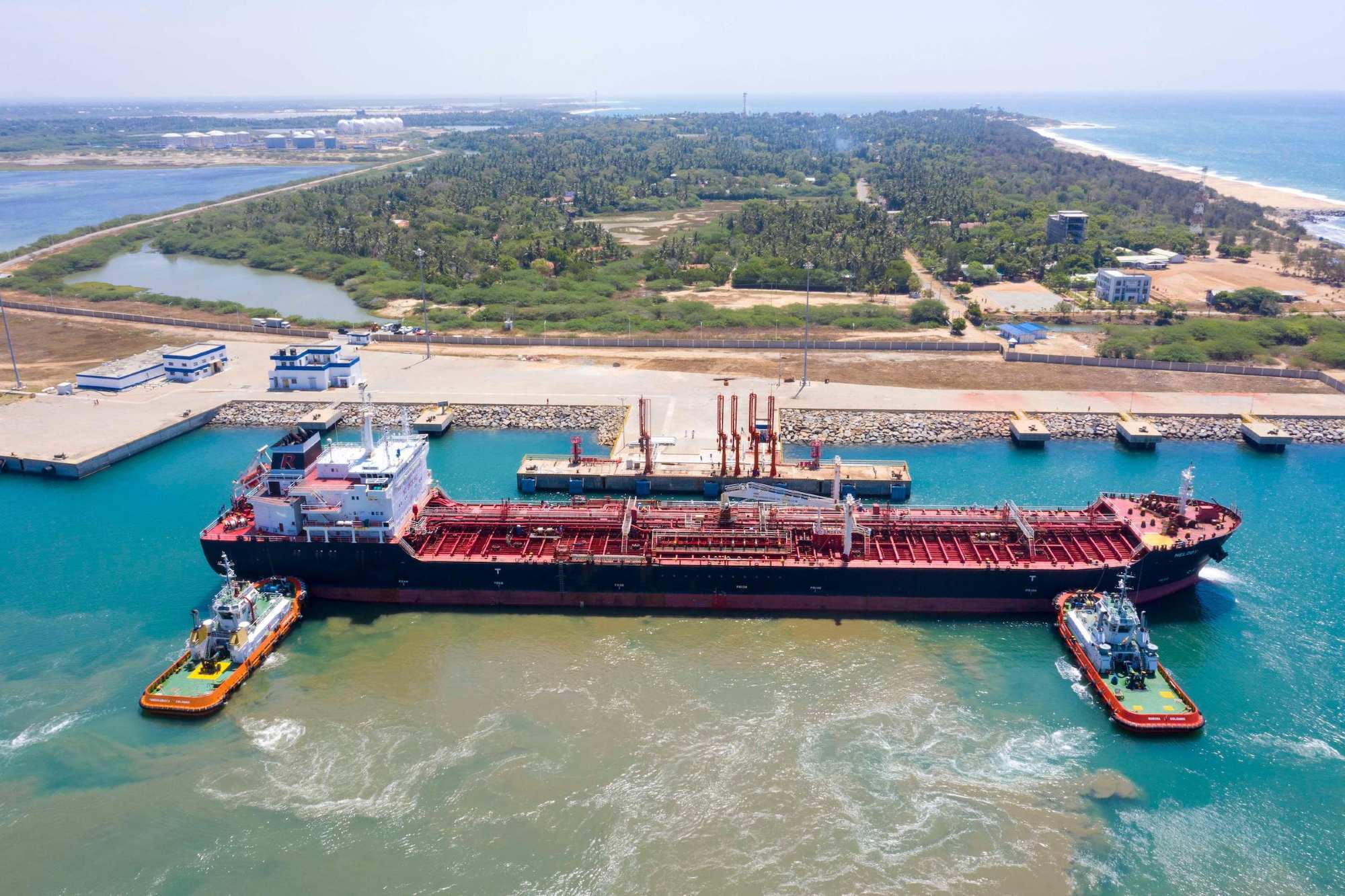Beginning January 1, the island nation of Sri Lanka, sitting on the tip of the Indian Ocean Region (IOR), has put a year-long moratorium on foreign research vessels from operating in its waters.
The moratorium is seen as a big diplomatic and strategic victory for India that has raised alarm over the Chinese research vessels surveying the vast swathes of the IOR under the pretext of conducting scientific tests.
The data gathered through these tests is invaluable for the Chinese submarines seeking to navigate the shallow waters of Malacca Strait and through the East IOR, causing much consternation to India.
China has put Sri Lanka under its thumb after it acquired the lease of Hambantota port, which the Chinese companies built. Sri Lanka gave Beijing a port right under India’s nose after the island nation failed to pay the Chinese firms.
The decision has come in the wake of China seeking permission to berth yet another research vessel in Sri Lanka’s waters in January 2024. China wanted to dock its marine scientific research (MSR) vessel, the Xiang Yang Hong 3, in Sri Lankan ports by early 2024.
The move follows Indian Prime Minister Narendra Modi urging President Ranil Wickremesinghe to respect Indian security concerns during their meeting in 2023.
Announcing the decision, Sri Lankan foreign minister Ali Sabry told the Daily Mirror that the government’s moratorium on research vessels from foreign countries will start from January onwards. “That is for us to do some capacity development so that we can participate in such research activities as equal partners,” he told the Lankan news outlet.
The Sri Lankan government also enters the election year in 2024 and doesn’t want to add to its geo-political woes by antagonizing its nearest neighbor.
The latest in the series of Chinese Oceanographic survey vessels coming into the region for a three-month-long mission is Shi Yan 6, which came to dock in the Hambantota Port in Sri Lanka right under India’s nose in 2023.
Besides the ostensible scientific goals, these surveys produce data on seabed conditions that serve both civilian and military purposes. While seismic data is critical in assessing geological conditions, the presence of hydrocarbons, water, and seabed conditions also affect the ability to detect submarines. Research vessels involved in scientific research can also use their instruments for naval reconnaissance, gathering intelligence on foreign military facilities and vessels operating in the vicinity.
The increasing presence of Chinese vessels in the IOR is keenly observed by India. Indian External Affairs Minister S Jaishankar said on September 28, 2023, that in the past 20-25 years, there has been a steady increase in the Chinese naval presence in the Indian Ocean.
“But there’s been a very sharp increase in the size of the Chinese Navy. So, when you have a very much bigger navy, that Navy is going to be visible in terms of its deployment somewhere,” he said, citing the examples of Chinese port-building in Gwadar in Pakistan and Hambantota in Sri Lanka.
The three Chinese-run ports in South Asia – Chittagong in Bangladesh, Hambantota in Sri Lanka, and Gwadar in Pakistan – are called a “triangle of death” encircling India.
The Chinese, however, call their presence in India’s backyard as benign and Shi Yan 6 is called a “scientific research vessel.” Manned by a crew of 60, it can carry out oceanography, marine geology, and marine ecology experiments.
Experts have told the EurAsian Times that this is dual-purpose data. The survey vessel can get data on seabed mapping, recording hydrological data to understand the profile of the undersea environment, subsea cable intelligence gathering, recording telemetry data of missile firings, and so on.
Past Survey Missions By Chinese Vessels
Last year, Yuan Wang 5, one of China’s latest generation space-tracking ships – used to monitor satellite, rocket, and intercontinental ballistic missile launches, docked at Sri Lanka’s southernmost port at Hambantota. The Pentagon has maintained that Yuan Wang ships are operated by the Strategic Support Force of the People’s Liberation Army.
Chinese survey vessels have become common in India’s sphere of influence. Reports indicate that the Chinese have been particularly interested in the Ninetyeast Ridge, a mid-ocean ridge on the Indian Ocean floor. The ridge divides the Indian Ocean into the West and East Indian Ocean.

Naval experts have contended that this range is important for submarine operations. The data will aid Chinese submarines in increasing their activity in the Indian Ocean.
In August 2019, a Chinese survey vessel ‘Shi Yan 1’ came 460 km east of the Indian island Port Blair in the Bay of Bengal and was forced to move out by the Indian Navy’s warships.
In December 2019, another of its survey vessels, Xiang Yang Hong 06, reportedly deployed at least 12 underwater gliders in the Indian Ocean. These long-endurance unmanned underwater vehicles (UUVs) traveled around 12,000 km at a depth of 6.5 km from the ocean surface to gather data on currents and water properties.
Experts also suggest that the Chinese survey activities near Indonesia and the Indian archipelago Andaman and Nicobar Islands aim to find the US Navy’s ‘fish-hook’ sensor networks. The network is designed to raise alarm when a Chinese submarine enters the Indian Ocean.
This area is near critical Indian Ocean chokepoints like the straits of Sunda and Lombok, used by Chinese sub-surface warships to enter the Indian Ocean. Its shallow waters make the submarines prone to detection; hence, the need to know the region as the back of one’s hands.
- Ritu Sharma has been a journalist for over a decade, writing on defense, foreign affairs, and nuclear technology.
- She can be reached at ritu.sharma (at) mail.com
- Follow EurAsian Times on Google News